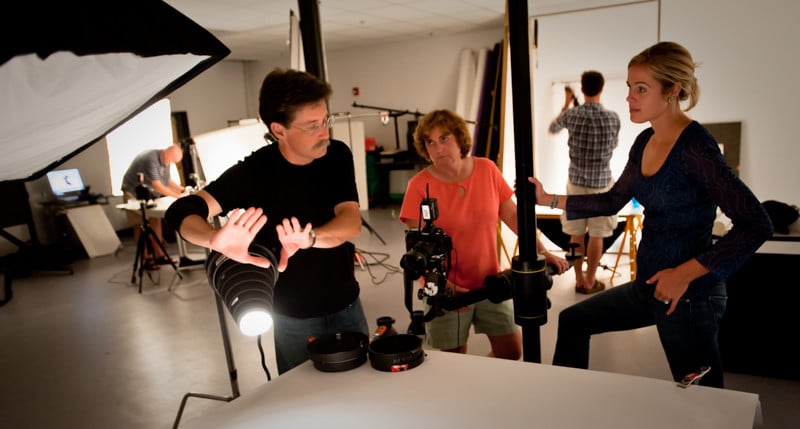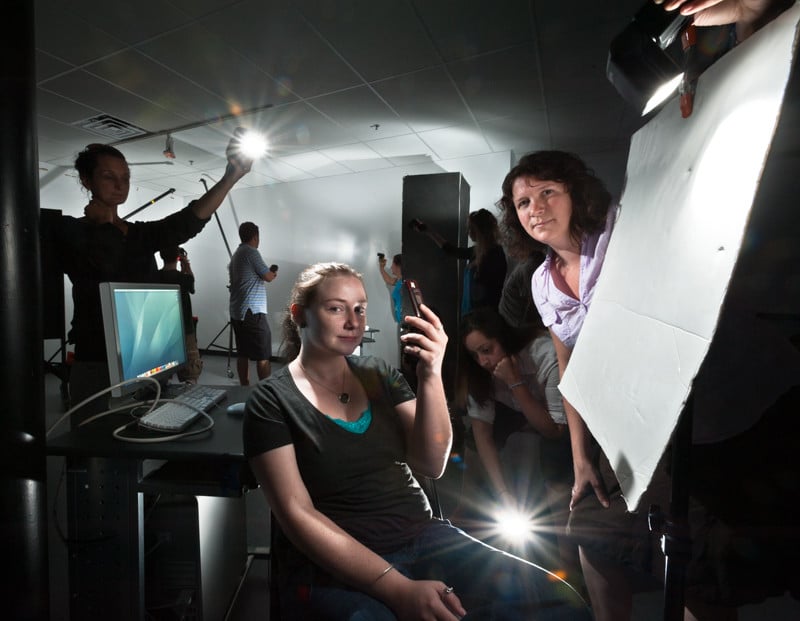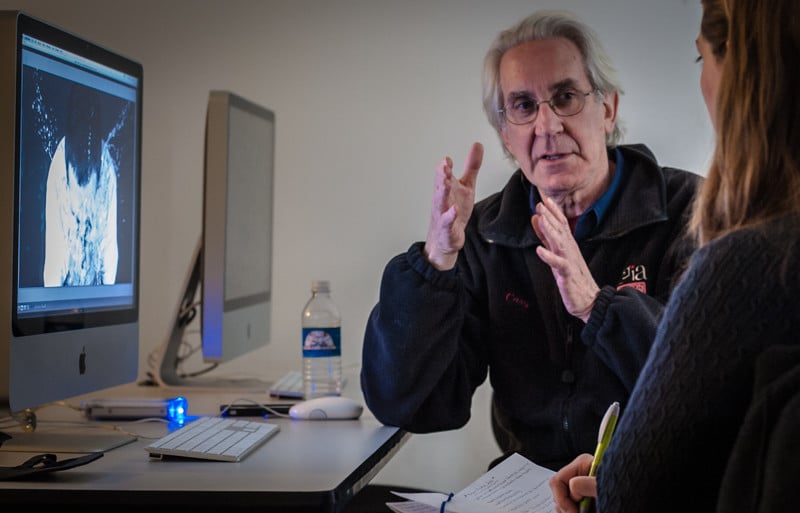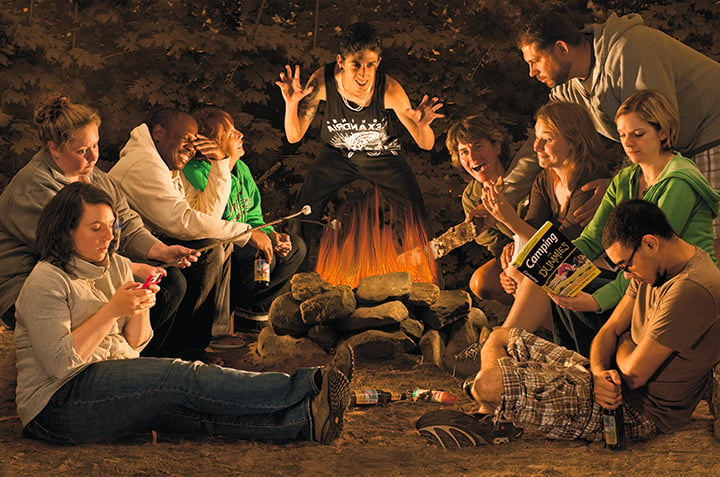Confessions of a For-Profit Photography Teacher
![]()
Making a living as a commercial photographer these days can be tough. But trying to keep the lights on at “for-profit” schools that teach photography to budding professionals ain’t no picnic, either. Just ask anybody who used to work for Brooks Institute in California or Hallmark Institute of Photography here in Massachusetts.
Both schools’ owners, two different education management conglomerates, announced they were pulling the plug last week, leaving current and incoming students high and dry, alumni scratching their heads, and critics saying “we told you so.”
The debate over the utility or futility of a formal education in photography has raged for decades, and the spectacular failures of two top schools within a few days of each other only add significant fuel to that fire. Of course, a large part of the blame lies with disruptive technologies that present an existential crisis to traditional brick and mortar photography schools. It’s proven to be not unlike an obnoxious fat kid who cannonballs a pool that everyone else has been taking their swimming lessons in for years.
Stay with me here. This is a bit of a stretch…
You can’t shoot the kid, that would be wrong, and besides, they’ll always make more kids. You can get out and sulk, tut-tutting with righteous certitude about the health benefits and life lessons of swimming as you sit and watch the water level getting lower and lower. “Can’t somebody stop that rotten kid?” you cry.
But not all of your soggy swimming buddies join the protest. There is a growing line forming up behind the fat kid, and it sure looks like they’re having a good time. Wait… wasn’t that Bob up on the diving board just now, shouting out “hey kids—watch this!” before executing the most god awful pool emptying belly flop you’ve ever seen? Bob was in the ’64 Olympics for Chrissakes!
The pool owner sees what’s going on, flips the OPEN sign to CLOSED and declares “that’s it, everybody out of the pool! I don’t know what you morons call what you’re doing, but we’ve been teaching swimming here since before Mark Spitz could even spell S-P-E-E-D-O, and that ain’t swimming! Now who’s gonna pay for all that water?”
In my humble but somewhat informed opinion as a commercial shooter, a teacher and a former program director, photography schools risk failing both their career-minded students and themselves by teaching swimming in a world that, for better or worse, wants and probably needs to do cannonballs.

But what if, sensing a shifting market and a new buck to be made, the pool owner suspects the kid might be on to something and hires him to teach cannonball lessons instead? And to keep an eye on the Internet, too, because there will always be newer, more exciting ways to cash in on a big splash, and there will always be people eager to learn them. He can still teach a little swimming if he wants to, but this new cannonball thing really seems to be catching on. He might even rebrand the joint with a catchy new name like “Institute of Multidisciplinary Aquatic Arts”!
Disruptive technologies are really good at shaking things up, because that’s precisely what really smart people design them to do. The same can’t always be said about the disruptees, most of whom are considerably less well designed for doing what they must do, which is to respond, adjust and profit from change. It’s something I think about every time I try to figure out which button to push on which of our four TV remote remote controls just so I can watch Vanna and Pat get hammered on the damn Wheel of Fortune!
The paradigm shift from chemical to digital imaging that began over a quarter century ago was the mother of all disruptions when it came to doing and teaching professional photography. Sadly, it took many photographers and most career schools an unacceptably long time to believe that.
But in their defense, a school’s ability to keep its business, its curriculum, its faculty, and its facility relevant rests almost entirely with its ability to put enough meat in the seats to pay for it all. Diminishing enrollment means less cold, hard cash to pay routine operating expenses, let alone to invest back into infrastructure.

You don’t have to look very hard to see which direction enrollment has been trending over the past decade or so. In Hallmark’s case, the investors were anticipating hundreds of new students to be able to continue paying off their world class facility, but reportedly closed their doors this week with just ten. Ten!
Why? I have my suspicions.
Most high school graduates can still read, and if they can’t, their parents who foot the tuition bills can. What they’re reading and seeing and hearing about the worst of the bad actors in for-profit education can make even the good guys and gals who work for squeaky clean schools feel like they need to take a shower. These a**holes have so thoroughly peed in my metaphorical pool a few paragraphs back that the whole idea of for-profit education sounds like a money laundering scheme hatched in a dark corner of some North Jersey taproom.
I’m outraged, and I’m from Jersey!
You and I may think, know or pray otherwise, but the hard reality that photography schools are being forced to adjust to is the growing perception that, yes, you can learn this stuff from the Internet. You can learn it from short workshops, portfolio reviews, lectures and seminars, from books, from trial and error, and from hanging out with or assisting other photographers.
You can learn it any way you want, on the cheap and in your spare time while you’re, oh, I don’t know, maybe earning a college business degree. I’ve been hearing photographers doling out that particular nugget of wisdom ever since 120 VPS starting coming in Pro Packs.
It doesn’t matter how many jaundiced old fogies circle the wagons and gripe—that perception isn’t about to change. In a free market, ankle nipping bottom feeders spawned by the Internet deserve the same shot at fame and fortune as the rest of us. Everybody steps off from the same starting line—photo grads and freeloaders alike.
Riding herd over it all are the Feds, who hold the financial aid pursestrings that keep the schools in business, the parents in debt, the kids in or out of school, and the bad actors out of good cee-gars. Uncle Sam is rightfully tightening the screws on for-profits by requiring that a strictly enforced percentage of their graduates quickly find gainful employment. Unfortunately, photography is a flooding field that has never been great at guaranteeing gainful employment. Gigs, sure. Jobs? Not so sure.

All this means that even the best schools are getting squeezed from all sides. They’re caught in a classic Catch 22, and in Yossarian’s immortal words, “that’s some catch, that Catch 22!”
But keeping up with technology, tighter regulations and cash flow aren’t photo schools’ only challenges.
Sheriff Joe Arpaio, Arizona’s notorious chief corrections officer, once famously defended his, shall we say, vigorously creative approach to managing that state’s overcrowded penal system by saying “the only problem with our prisons is the quality of our inmates.” Anyone who has ever taught in or managed a for-profit photography program understands instantly why I chose to include that seemingly irreverent and irrelevant quote in this essay.

Now, I love my students, every livin’ last one of ‘em, and there’ve been hundreds. Most show up with good heads on their shoulders and both feet on the ground. They have realistic goals, they understand what professional photographers do, and they get the difference between spending 9 or 18 months at a trade school versus 4 years at college or art school.
Still, show me a sensitive, impressionable young student whose eureka moment came during the third reel of Austin Powers, War Photographer,High Art or, God forbid, The Bridges of Madison County (“dude, that sh*t is sick—I’m gonna be a photographer”) and I’ll show you a photo student who is none too happy to be staring down the barrel of his EF 24-70mm f/2.8L II USM at the prospect of shooting a wedding.
Sorry to be the one to break it to you, Oden, but weddings are still the best, and some say the only, way for a wet behind the ears, fresh out of the sausage factory photo school graduate to get started and get paid. We all have to shoot weddings at some point. It’s good for us, like broccoli and exercise. Think of it as combat photography, but with a mother of the bride instead of IEDs. Where we go from there is up to us.

Enough said, photo teachers?
I never taught at Brooks or Hallmark, but I know plenty of people who did. All but the most troubling issues and trends they describe have echoes at all photo schools. The glowing reviews from committed students who appreciated their efforts and took full advantage of every opportunity placed in front of them are exactly the same, as are the scathing attacks from their thankfully low percentage of misguided, unmotivated, or otherwise unsatisfied customers.
As educators, we have no control over whether or not our livelihood is sold out to an education management conglomerate; but we have total control once the classroom or studio door closes. We signed on to career schools to lend our expertise to students who hope to someday get paid for taking pictures, or doing cannonballs, or whatever other crazy new thing a paying customer in the twenty-first century expects a “photographer” to do.
We’re the product the schools are selling, the tip of the spear, and it’s up to us to teach them what they need to know today, not just what we needed to know yesterday.
Some of it is the same stuff that photographers have been doing since Ansel Adams was in short pants. Most of it is not, and even a traditional old poop like Ansel foresaw that eventuality. And more and more of it should be taught by accountants, lawyers, filmmakers, graphic and web designers, artists, writers, illustrators, applications trainers, 3D animators, and maybe even a real working photographer or two.
That may be hard to swallow, but a curriculum that stresses collaboration and multidisciplinary training will go a long way toward preparing career students for the world in which they must try to compete. It’s a world that has a voracious appetite for media in all its forms, and it’s a world we have a responsibility to prepare them for.
Like me, most of my teaching contemporaries learned how to be photographers back in the 1960’s and 1970’s, which, coincidentally, was when many great photo schools like Brooks hit their prime. The technology was stable and mature, and those who learned formally at school were required to bring little more than a $200 Pentax K1000 with a 50mm lens, a notebook, and a modest tuition check that didn’t bounce to the first day of class.
When graduation day came, newly minted young professionals were encouraged by some honorary-degreed luminary that regardless of the fickleness of the business, success would eventually come to anyone with the fortitude to diligently put into practice the lessons and techniques they were taught in school. Just like the luminary did.
Parting advice about equipment often sounded like this:
“Buy a Hasselblad, kid. It looks good when you show up for gigs. You can shoot anything with it, you can fix it with a screwdriver, and if you take care of it, your family will bury it with you.”
Today, I dare you to tell a graduating student what the business will look like even in 5 years, let alone over the long course of her life. The only thing any of us can say with any degree of certainty is that if she somehow manages to ply her trade for the next 40 or 50 like we did, the end of her career in the 2060’s or 2070’s will look absolutely nothing like it did at the beginning, and would be unrecognizable to me and my ilk.
It kind of sucks that we won’t be around to say we told her so.

If this doesn’t sit well with any of you out there thinking about attending a career photography school, I suggest you consider applying to a traditional art school instead. At the very least you’ll get a tattoo and a degree, and they won’t look at you funny if you show up for the first day of class with a Hasselblad (unless it’s that awesome new X1D).
But if this does sound right to you, good. You’re already moving in the right direction.
Good luck!!
Now, if you’ll forgive me, I must get back to creating the online course I’m teaching next week for, you guessed it, a for-profit school. For an old poop like me, it’s a little weird talking to a computer screen at home in my BVDs instead of showing up in person to keep a room full of students awake, but it’s just how so many curious, passionate people choose to learn these days. It’s teaching me a thing or two, too.
And hey, it’s a living!
Author’s Note: The photographs included here show some of my great teaching colleagues and students from Boston University Center for Digital Imaging Arts, an innovative multidisciplinary media career school that nevertheless went belly up in 2014.